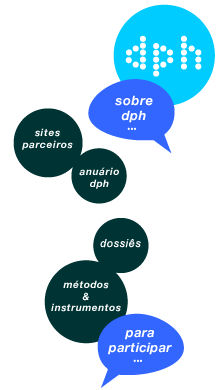Indigenous peoples make up about a third of Canada’s total inland fishery and half the anadromous fisheries of the north-western United States (US). Typically, in the Northwest Coast of the Pacific Rim, over half the indigenous peoples fish to supplement food and income from other sources. In the Hudson Bay-Great Lakes area, nearly all rely on fishing for food during the summer months. In addition to determining how large these communities are and how they are distributed, marine resources also provide a significant material base for cultural development.
This latter attribute is often ignored. According to Four Directions Council, an association of indigenous peoples from Canada and the US, « among non-industrial economic systems, fishing compares favourably with agriculture as a base for the development of complex civilisations. » For instance, the fisheries along the Pacific coast from the Columbia River to the Gulf of Alaska sustained a regional style of monumental sculpture and formal theatre called « Northwest Coast ». On the Pacific coast of North America an entire culture depended on one single stock of salmon species returning yearly to one single river.
Indigenous peoples have traditionally been disciplined in harvesting and developing their fisheries. Sometimes fishing sites are individually assigned. At other times, restrictions are placed on when, where and what type of species may be caught. Through kinship and trade relationships, they have also developed their own kind of « social security system ». Fishermen, for example, could fish with their kinsmen in distant villages.
Most of the fishing is done near the shore, in rivers, estuaries and inter-tidal areas- the very areas which are sitting ducks for pollution and coastal development projects.
The greatest threat to North American indigenous fisheries comes from the highly polluting pulp and paper industry. Logging blocks the migration of spawning trout and salmon. The other danger results from hydroelectric dams. For instance, when a complex of dams was built in the 1930s on the Colombia river, among the world’s largest freshwater systems, fish production fell by four-fifths, destroying the livelihood of many upstream indigenous communities.
Further, many of the species normally harvested are migratory. They are especially vulnerable to the ill-effects of industrial activity. Beluga whales caught by Inuit off Baffin Island are found to carry toxic loads from industrial mining activity along the St. Lawrence river, over 1,500 km to the south of the island.
Coastal fisheries are also devastated by off-shore pollution. For instance, the Exxon Valdez oil spill in 1988, in which a 3000-square mile slick coated about 300 miles of shoreline, affected more than half of the fishing sites customarily used by coastal villages in the gulf of Alaska.
They are also hit by unrestrained fishing by non-indigenous people as well as recreational fishing for sport. American, Canadian and European Community vessels fish intensively for cod, herring and capelin in Atlantic Canada. Salmon is increasingly intercepted by the high-seas drift nets of Japanese and Taiwanese fleets.
Despite these problems, few countries put indigenous fisherfolk on par with commercial and recreational users of the seas. This is because they think artisanal fisheries have no real economic value, compared to commercial fisheries that generate cash incomes and pay taxes.
Nonetheless, historically, there have been treaties on fishing rights between colonial powers and indigenous peoples. There are also multilateral conservation treaties which protect the harvesting rights of indigenous peoples, such as the 1911 international convention for the protection of Pacific fur seals. The 1989 ILO Convention on Indigenous and Tribal Peoples in Independent Countries contains important provisions. « Taken together », says Four Directions Council, « these recognise a right to continuity of enjoyment of subsistence resources, including fisheries - a right to food security. »
The fisheries of indigenous peoples are often characterised by « self-regulation » or « co-management ». For example, the Inuit have formed the Alaska Eskimo Whaling Commission and the Alaska Eskimo Walrus Commission and the Cree have the Cree regional Authority.
Palavras-chave
pesca, poluição, conhecimento tradicional, povos indígenas, segurança alimentar
, Estados Unidos da América, Canadá
Comentários
It is evident that indigenous peoples the world over have much in common. In both the North and the South the livelihoods and the very cultural base of indigenous and artisanal fishers are being destroyed by developments around them. They are threatened both by the increasing use of destructive technology and practices by the fishery sector, especially by the industrial fishing fleet, and by the destructive environmental and social consequences of activities pursued by other sectors, such as industry, shipping and agriculture. There is an urgent need for the adoption of better management practices within the fisheries sector. Coastal area management programmes that regulate the activities of all users of coastal resources, are also essential.
Much can be learnt from the fishery resource management practices of indigenous people themselves. Their knowledge can be supplemented by technical and financial support related to fisheries management, environmental monitoring and marine sciences. At the same time, a sustained global networking among indigenous fisherfolk, researchers and their supporters will ultimately create a body of useful experience and knowledge. It will also enable indigenous people to protect their traditional access to fishery resources, and to ensure that their food security needs are prioritised.
Notas
This article is also available in French : Les peuples indigènes pêchent pour leur sécurité alimentaire.
Fonte
Artigos e dossiês
Samudra Editorial Team, Fishing for food security in. Samudra Report, 1993/11, 8, Background study prepared for UNCED by Four Directions Council, North America

ICSF (International Collective in Support of Fishworkers) - 27 College Road, Chennai 600006, INDIA - Tel. (91) 44-2827 5303 - Fax (91) 44-2825 4457 - Índia - www.icsf.net - icsf (@) icsf.net



